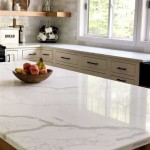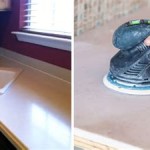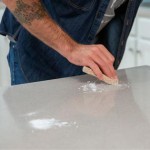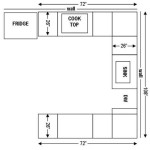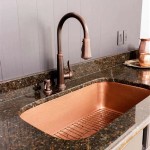Attaching Countertop To Base Cabinets: A Comprehensive Guide
Securing a countertop to base cabinets is a fundamental step in kitchen and bathroom renovations. A properly attached countertop not only provides a stable and functional work surface but also contributes significantly to the overall aesthetic appeal and longevity of the cabinetry. This process involves careful planning, the selection of appropriate materials, and the application of precise techniques. Ignoring these aspects can lead to loose, unstable countertops, potentially causing damage to both the countertop and the cabinets over time.
This article outlines the necessary procedures and considerations for effectively attaching a countertop to base cabinets, ensuring a durable and visually pleasing result. The information presented caters to a range of countertop materials and attachment methods, providing a comprehensive understanding of the process.
Preparing the Base Cabinets for Countertop Installation
Before attaching any countertop, the base cabinets must be properly prepared. This preparation ensures a level and stable foundation, which is critical for the countertop’s long-term stability and prevents issues such as cracking or uneven surfaces. The first step involves inspecting the cabinets for any structural weaknesses or damage. Loose joints should be reinforced with wood glue and screws. Warped or damaged cabinet panels may need to be replaced or repaired to provide adequate support.
Next, verify that the cabinets are level. Uneven cabinets can cause stress on the countertop, leading to cracks or separation over time. Use a level to check both the horizontal and vertical planes of each cabinet. Shims can be strategically placed beneath the cabinet bases to correct any leveling issues. These shims should be made of a durable material, such as plastic or treated wood, to prevent moisture absorption and warping. Once the cabinets are level, securely fasten them to the wall and to each other, creating a unified and stable base.
Finally, clean the top surfaces of the cabinets to remove any dust, debris, or grease. This ensures a strong bond between the cabinets and the adhesive or fasteners used to attach the countertop. A solvent-based cleaner can be used for this purpose, but ensure that it is compatible with the cabinet finish to avoid damage. Allow the cabinets to dry completely before proceeding to the next step.
Selecting the Appropriate Attachment Method
The choice of attachment method depends on several factors, including the countertop material, the design of the cabinets, and the desired level of permanence. Common attachment methods include using construction adhesive, screws, or a combination of both. Each method has its advantages and disadvantages, and the optimal choice will vary depending on the specific project.
Construction adhesive provides a strong and relatively permanent bond between the countertop and the cabinets. It is particularly suitable for solid surface countertops, such as granite, quartz, and acrylic, as it distributes the weight evenly and minimizes stress points. When using construction adhesive, it is crucial to select a product that is specifically designed for countertop installation and is compatible with both the countertop material and the cabinet finish. Apply the adhesive in a consistent bead along the top edges of the cabinets, ensuring complete coverage. Place the countertop carefully onto the cabinets and apply even pressure across the entire surface to ensure a strong bond. Allow the adhesive to cure completely according to the manufacturer's instructions before using the countertop.
Screws provide a mechanical attachment that is both strong and reversible. This method is often preferred for laminate and wood countertops, as it allows for adjustments or removal in the future. When using screws, pre-drill pilot holes through the cabinet frames to prevent splitting the wood. Select screws that are long enough to penetrate the countertop sufficiently but not so long that they protrude through the top surface. Use washers to distribute the pressure and prevent the screw heads from sinking into the countertop material. Space the screws evenly along the cabinet frames, typically every 12 to 18 inches, to ensure adequate support.
A combination of construction adhesive and screws offers the benefits of both methods, providing a strong and reliable attachment that is also somewhat reversible. This approach is particularly suitable for heavy countertops or installations where additional security is desired. Apply construction adhesive as described above, and then use screws to reinforce the bond, particularly in areas that are subject to high stress or weight. Ensure that the screws are properly countersunk to prevent them from interfering with the countertop surface.
Detailed Steps for Attaching the Countertop
The following steps provide a detailed guide for attaching a countertop to base cabinets, incorporating best practices for ensuring a secure and aesthetically pleasing result. Before beginning, gather all necessary tools and materials, including a level, measuring tape, drill, screwdriver, construction adhesive, screws, shims, and appropriate cleaning supplies.
First, carefully position the countertop on the base cabinets, ensuring that it is aligned correctly and overhangs the cabinets by the desired amount. Use shims, if necessary, to maintain a consistent reveal around the perimeter of the countertop. Once the countertop is properly positioned, use a pencil to mark the locations of the cabinet frames on the underside of the countertop. These marks will serve as guides for applying adhesive or installing screws.
If using construction adhesive, apply a continuous bead of adhesive along the top edges of the cabinet frames, following the marked guidelines. Be generous with the adhesive, but avoid applying so much that it squeezes out from under the countertop. If using screws, pre-drill pilot holes through the cabinet frames, aligning them with the marked locations on the underside of the countertop. Ensure that the pilot holes are slightly smaller than the diameter of the screws to provide a secure grip.
Carefully lower the countertop onto the base cabinets, aligning it with the marked locations and pressing down firmly to ensure a good bond. If using construction adhesive, apply even pressure across the entire surface of the countertop to ensure that the adhesive makes full contact. If using screws, drive the screws into the pilot holes, tightening them securely but avoiding over-tightening, which could damage the countertop or cabinet frames. After the countertop is attached, remove any excess adhesive with a damp cloth. Allow the adhesive to cure completely according to the manufacturer's instructions before using the countertop.
Inspect the countertop for any gaps or unevenness. If necessary, apply a bead of caulk along the perimeter of the countertop to seal any gaps and create a seamless transition between the countertop and the backsplash. Select a caulk that matches the color of the countertop and is specifically designed for use in kitchens and bathrooms. Smooth the caulk with a wet finger or a caulk smoothing tool for a professional finish. Finally, clean the countertop thoroughly to remove any dust, debris, or fingerprints. Use a cleaner that is appropriate for the countertop material to avoid damaging the surface.
Proper planning, careful execution, and the use of appropriate materials are essential for successfully attaching a countertop to base cabinets. By following the steps outlined in this article, homeowners and contractors can ensure a durable, stable, and visually appealing result that will enhance the functionality and aesthetic value of their kitchen or bathroom.
Regular maintenance, such as cleaning and sealing the countertop as needed, will help to prolong its lifespan and maintain its appearance. Inspect the countertop periodically for any signs of damage or loosening and address any issues promptly to prevent further problems. With proper care and attention, a well-attached countertop can provide years of reliable service.

How To Install Laminate Countertops

How To Install Laminate Countertops Step By

How To Install Laminate Countertops Step By

How To Install Laminate Countertops The Home

How To Install Laminate Countertops

How To Install Laminate Countertops Step By

How To Install Laminate Countertops The Home

Installing Tile Countertops Backsplash Family Handyman

How To Install Laminate Countertops The Home
Setting Kitchen Cabinets Sterling Lumber Serving Colorado Since 1909
See Also

